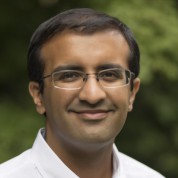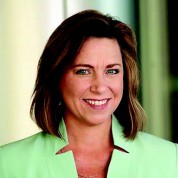Main Conference Session
S7
Capacity to Contain Future Pandemics in Communities
29
Jan
Since the start of the 21st century, infectious disease outbreaks have increased. The vast majority, 75 percent, of infectious diseases in people originate from animals, at a time when an increasing number of people around the world are living in closer proximity to animals. These threats have manifested themselves over the past two decades in the form of increased frequency and severity of outbreaks, with the ongoing COVID-19 pandemic the most serious in a century. These outbreaks are a sobering reminder of how diseases know no borders, and how every country remains vulnerable to zoonotic diseases reinforcing the importance of global health security efforts in our everyday lives. The COVID-19 pandemic is also a strong reminder of the connection between animals, humans and the environment, and the effect an emerging pathogen can have on global health and economies. Additionally, climate change, land use change, deforestation and other drivers change contact between animals and people in new and risky ways leading to more spillover events
While the global health community has been preparing for large-scale epidemics and pandemics, the COVID-19 pandemic has laid bare the weaknesses and vulnerabilities for a global response. Initially some countries were able to leverage their previous preparedness efforts to implement successful public health responses, however all countries have been overwhelmed by surges, resources stretched thin, at some point during the pandemic. The global community understands that outbreaks begin and end in communities. Experience from previous infectious disease outbreaks and the COVID-19 pandemic has demonstrated that sustained community engagement is critical for early detection and response as well as for establishing trust and social cohesion. We need to invest in communities; leverage academic institutions; support and resource frontline health workers including community health workers; and invest in community-based surveillance and data collection to inform early detection and enable swift action to respond.
This session will explore the resources, trust, data and information needed for communities to better detect and respond to infectious disease events by practitioners, educators, and community leaders. Specifically, the session will explore what we have learned from past infectious disease outbreaks and what we can improve in supporting community-level workers, the role the community can play in detection and surveillance to support early response, and the role of academic institutions in supporting communities.
Key questions
This session will explore what is needed for communities to better detect and respond to infectious disease events from the different perspectives of practitioners and educators.
This session will explore the following topics:
Front-line/community health (human and animal) worker: What measures can be taken to strengthen community health (animal and human) investments to better prepare communities for infectious disease threats and also foster trust, cohesion and equity?
Data and early warning: What is the role of the community, including clinicians, in surveillance and how can their use of data be facilitated to better detect and respond to infectious disease events? How can technology be used to support data collection and dissemination? How can data from the community be fed into early warning platforms and how does that data flow back to the community level for risk analyses and assessment?
Role of academia in supporting communities: What role do academics and universities play in preparing for and supporting responses to infectious diseases events in communities? How can these institutions be leveraged to respond to infectious disease events in communities?
Biosketch
James Bangura
Jonna Mazet
Patipat Susumpow
Raj Panjabi
Ramatu Jalloh






